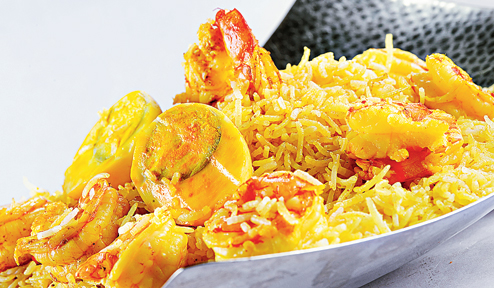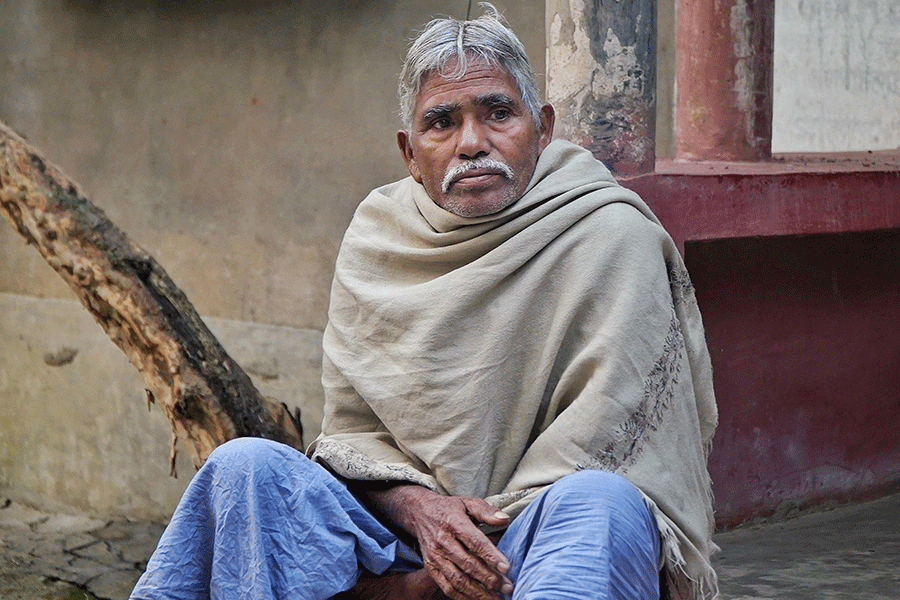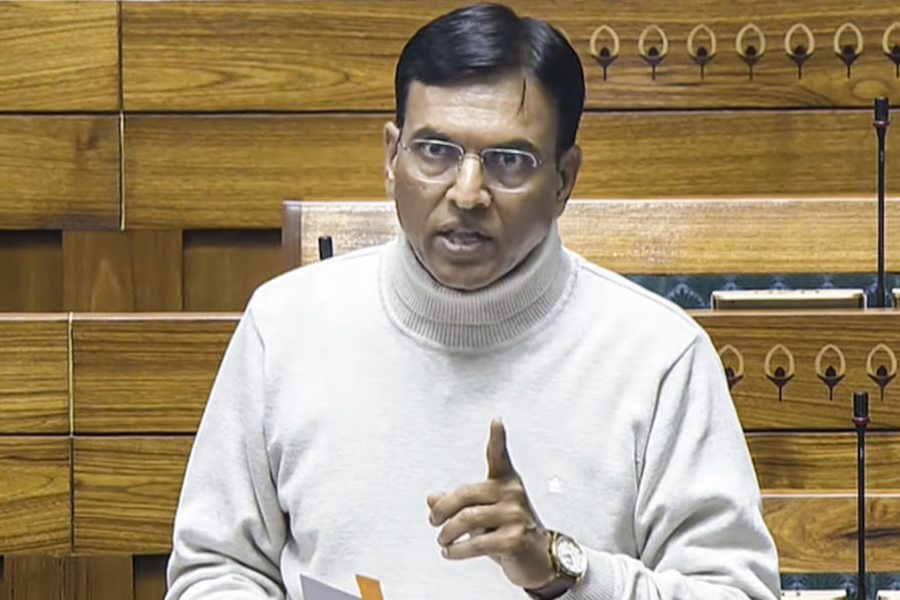
The other day, a friend was complaining bitterly about biryanis. She was tired of eating mutton or chicken biryani because, she argued, they tasted just the same. But that, I later thought, is not the fault of the biryani — it’s just that the biryanis we generally eat are of the same sort.
And that’s a pity for there are various kinds of biryanis. Just fish biryanis, for instance, can lead to a thick tome. In fact, there are so many variations of fish biryanis that each dish is almost like a genre in itself.
This struck me anew when I heard that Calcutta restaurant Oudh 1590 is celebrating biryanis. And while it has various kinds of biryanis prepared with lamb and chicken, there are quite a few rice dishes cooked with fish and seafood, too.
On the menu is jhinga biryani, for which prawns are marinated and kept aside. In hot oil onions are browned, and then fried with green cardamoms, mace flakes, ginger and garlic paste, turmeric powder, yellow chilli powder and coriander powder. Tomatoes are fried. Some whisked yoghurt goes in, and then the prawns are added. These almost-cooked prawns are then steamed with parboiled rice.
This dish is the Awadhi version of prawn biryanis that you find elsewhere. Every region, I find, has its own variety. Author Pratibha Karan, whose book Biryani is my Bible, mentions a jhinga biryani which is a fusion of northern and coastal flavours and writes about a Parsi version, made mildly tart with tomatoes and saffron-dipped lime.
.jpg)
Another expert on biryanis — and she used to wield a mean karchi, too — was the columnist Sabina Sehgal Saikia. In a book on rice dishes (called Finest Rice Recipes), she writes about ITC chef Manisha Bhasin’s Moplah biryani, where the prawns are cooked with tomatoes and yoghurt, and the chingri morich pulao by chef Ram of Oh! Calcutta, where the dominant flavour is that of black peppercorns.
You’ll find various kinds of fish biryanis in regions where fish is much loved. Kerala has its meen choru (best cooked with kaima rice, says Karan), and Mangalore has a dish which she describes as “very coastal, very south Indian”. This fish biryani is cooked with coconut, garlic cloves, curry leaves and ground whole red chillies.
The fish can take different forms, too. In one Kerala fish biryani, a whole pomfret is semi-cooked with masalas and then steamed with rice. Oudh 1590’s mahi kofta biryani is prepared with minced fish balls. Its Gomti mahi pulao is a dish of boneless fish, cooked in gravy. The gravy goes into the biryani like a thick stock, enhanced with the flavours of gondhoraj lime.
.jpg)
The great thing about fish biryani is that each dish tastes different, because the fish taste itself differs. A pomfret biryani will be vastly different from a dish cooked with seer or bekti. And, of course, the hilsa biryani will always be special.
Bangladeshi food writer and television presenter Shawkat Osman cooks the hilsa biryani in a very interesting way. In his book Khunti Korai - Bangaldeshi Cuisine, he says that you should first make some stock with the hilsa head and tail, along with carrots and quartered onions. Marinate the fish with yoghurt and powdered masalas, fry it and keep aside. In a degchi, heat ghee, and then fry whole spices along with onion and other pastes. Then fry the rice. When the rice changes colour, pour fish stock to form a layer. When the rice is al dente, add some hot milk, and then the fish, and finally fried onions. Cook covered till done.
For his ilish kheyali pulao, chef Ram uses mustard oil and a paste prepared with a whole lot of green chillies. The fish is steamed, de-boned and then cooked with the rice in fish stock.
In parts of India, fish is not eaten in those months which do not have the letter ‘r’ in their names. April is the last month with an r — the drought starts with May and ends with August — so I would suggest that you make your way to the nearest fishmonger. Let there be some fish biryani in our lives.
Photographs by Subhendu Chaki; Courtesy: Oudh 1590, Calcutta










